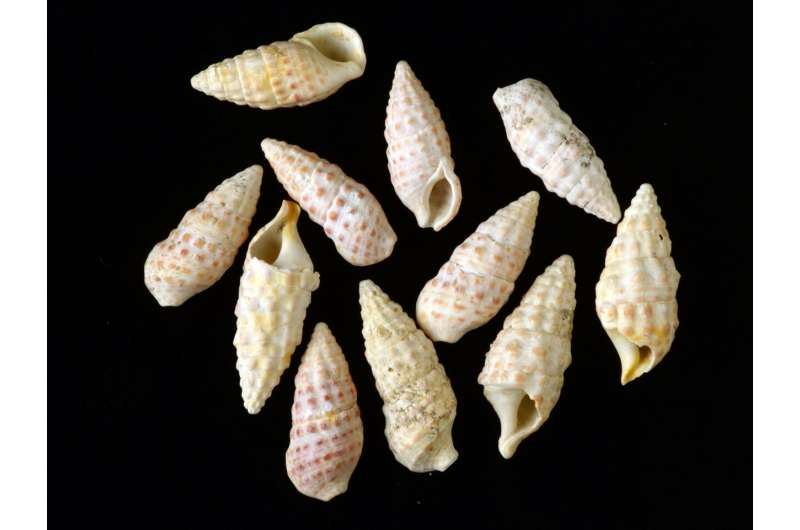This article has been reviewed according to Science X's editorial process and policies. Editors have highlighted the following attributes while ensuring the content's credibility:
fact-checked
proofread
Austria's oldest preserved dyes detected in Miocene snail shells

Pigments in fossil snail shells from Austria dating back 12 million years are the oldest known preserved dyes from the polyene group, as scientists from the Natural History Museum Vienna and the University of Göttingen have now demonstrated. The research is published in the journal Palaeontology.
Many of today's snails show striking patterns of dots, spots and stripes. The most common colors in snail shells are yellow, orange, pink, red and black. These colors are produced when snails store dyes, so-called pigments, in their shells, which are produced by special cells and deposited in varying concentrations.
The chemical compositions of the pigments vary widely. The most important chemical compounds include melanins and carotenoids. Melanins are responsible for the dark colors in our hair and skin, and carotenoids also give bird feathers and egg yolks their typical red and yellow hues.
Snail shells are made of aragonite, a form of lime that remains more or less unchanged over millions of years. In contrast, pigments are very sensitive and are quickly broken down into their organic components.
As a result, fossilized shells are usually light in color and plain, and remnants of color patterns on fossils are very rare. Sites where such fossils have been found are located along the border between Austria and Hungary in gravel pits south of St. Margarethen in Burgenland and near Nexing in Lower Austria.
Here paleontologists from the Natural History Museum Vienna discovered shells of needle snails that lived 12 million years ago on the shores of what was then a tropical sea. "However, it was unclear whether the patterns were indicative of their original reddish coloration or were created by later processes in the sediment," says Mathias Harzhauser, Director of the NHM Vienna's Geological-Paleontological Department.
To solve this puzzle, the shells were sent to the Geoscience Center at the University of Göttingen, where Klaus Wolkenstein has spent years researching the chemistry of fossil pigments.
Raman spectroscopy was used to successful identify the origin of the colors, which involved irradiating the sample with laser light and examining the emitted spectra. Each spectrum produces a fingerprint of the examined material, enabling the researchers to make a clear identification.
"To our surprise, it turned out that the pigments have actually been preserved nearly unchanged for 12 million years. This is the oldest evidence of these kinds of fossil pigments worldwide," says geochemist and study leader Wolkenstein.
In terms of their chemical composition, the detected pigments belong to the polyene group, which are organic compounds that also include carotenoids.
More information: Klaus Wolkenstein et al, Detection of intact polyene pigments in Miocene gastropod shells, Palaeontology (2024). DOI: 10.1111/pala.12691
Provided by Naturhistorisches Museum Wien





















